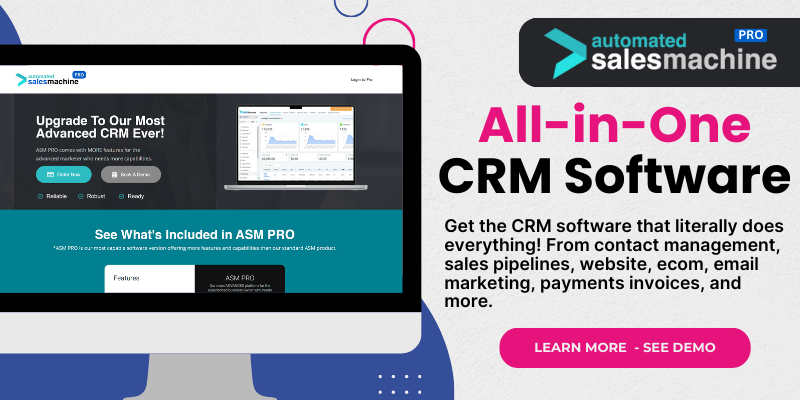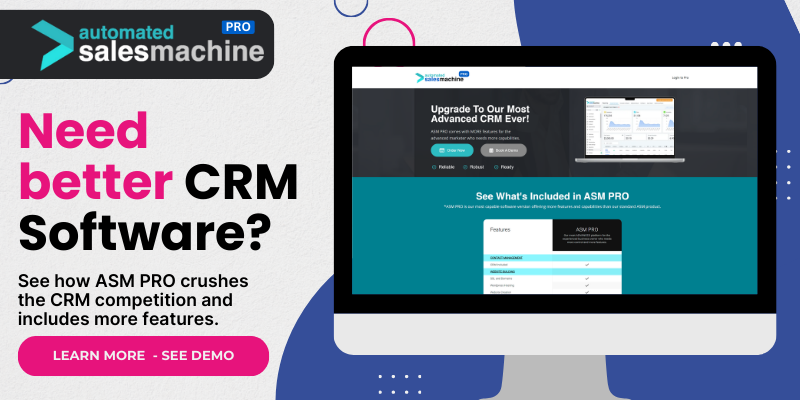1. Salesforce for Education
Overview and Key Features
When I first delved into the world of CRM for educational institutions, Salesforce was hard to miss. With its robust platform tailored specifically for education, it’s no wonder this software is frequently at the top of lists. The platform offers features like student relationship management, analytics, and reporting tools that are invaluable for institutions looking to improve student engagement.
One standout aspect is its customization options. You can tailor Salesforce to your specific institutional needs, whether it’s tracking prospective students or managing alumni relationships. This level of flexibility means that if you have a unique requirement, there’s often a way to make it work.
The community aspect is also significant. There’s a vast number of users and experts who share their experiences and solutions, which can be super helpful when you run into challenges. Plus, their dedicated support for educational institutions gives you peace of mind.
Use Cases in Education
In my experience, Salesforce shines when it comes to recruitment and admissions processes. Educational institutions can efficiently track applicants from inquiry to enrolment, making it easier to manage interactions. This streamline not only saves time but enhances the overall experience for both the institution and the applicants.
Moreover, Salesforce’s powerful analytics tools can help schools understand trends and patterns in student behavior, leading to more informed decisions. For instance, understanding where prospective students are falling off in the application process can help institutions tweak their approaches and improve conversions.
I’ve seen many universities utilize Salesforce for alumni engagement too. Keeping track of graduates, their careers, and even inviting them back for events has been made seamless through this platform. Creating that strong alumni network supports ongoing relationships, which can be beneficial for fundraising and mentorship opportunities.
Cost Considerations
While Salesforce offers incredible features, it’s essential to consider the costs involved. For smaller institutions, the pricing may seem a bit steep, particularly when you add in customizations and training. But for larger universities with significant resources, it can be worth every penny.
It’s also crucial to assess the long-term return on investment. If implemented correctly, Salesforce can save a school money by improving admissions processes and enhancing student satisfaction, ultimately leading to higher retention rates.
There are often grants or educational discounts available, which can help reduce costs. So, if you’re considering Salesforce, definitely do some digging on financial assistance opportunities. I’ve learned that it never hurts to ask!
2. HubSpot CRM
Overview and Key Features
HubSpot CRM has become one of my go-to choices for educational institutions that are just starting with customer relationship management. Its user-friendly interface and free tier make it a fantastic option for smaller schools or districts. You can get your feet wet without any upfront investment!
One thing I love about HubSpot is its marketing automation capabilities. For educational marketers, this means you can set email campaigns to nurture leads over time. The software also integrates seamlessly with other tools, which is brilliant if you already use various platforms for fundraising or events.
Another feature that stands out to me is the reporting dashboard, which allows educators to track engagement and conversions in real-time. Having that visual representation helps in making quick decisions based on what’s actually working.
Use Cases in Education
From my perspective, HubSpot serves particularly well in communications. I’ve seen schools use it to maintain consistent contact with prospective students, parents, and alumni. The ability to segment contacts and create personalized experiences has made a significant difference in making stakeholders feel valued.
Additionally, if your institution organizes events, HubSpot can help manage registrations and communications. I’ve seen schools benefit from automated reminders and follow-up emails to keep participants informed and engaged.
I also appreciate how customizable it is. You can adapt the CRM to suit your school’s processes, whether for tracking different student demographics or managing outreach efforts. Flexibility is key in education, and HubSpot delivers on that front.
Cost Considerations
The beauty of HubSpot lies in its pricing model. You can start with the free version and only pay for additional features as your needs grow, which has certainly benefitted my clients with limited budgets. It feels less intimidating to invest in a tool that you can start using for free.
That said, if you want to access more advanced features, plans can get pricey. It’s essential to weigh the benefits against the costs. If your institution is likely to scale up madly soon, investing in those premium features might be worth it in the long run.
My advice? Start small, evaluate what you find most beneficial, and expand from there. Just because you’re working within a budget doesn’t mean you have to skimp on capability!
3. Microsoft Dynamics 365 for Education
Overview and Key Features
Microsoft Dynamics 365 is a force to be reckoned with. It’s not just about CRM; it’s a full-fledged suite that offers insights into your educational institution’s entire ecosystem. I’ve had hands-on experience with its features that allow schools to integrate various functions all in one place, such as admissions, finance, and even HR.
One of my favorite features has to be the rich data analytics capabilities. Its integration with Microsoft’s other tools, such as Power BI, means you can analyze student data to uncover valuable insights that can influence institutional strategies.
Additionally, the AI capabilities are remarkable, helping institutions predict student success and identify those at risk. With this intelligence at your fingertips, schools can be proactive in their approach, leading to better outcomes.
Use Cases in Education
In the settings I’ve witnessed, Dynamics 365 manages everything from student lifecycle management to finance management with ease. For institutions overwhelmed by different systems, this all-in-one solution can truly simplify life.
I’ve also seen educators utilize it to track student performance and engagement. By accessing detailed reports, they can tailor their teaching strategies to meet learners’ needs, leading to greater satisfaction and success rates in courses.
Plus, when schools organize events, Dynamics 365 can handle registrations and communications effortlessly. This aspect often saves administrative staff an incredible amount of time and resources, which they can redirect to more pressing tasks.
Cost Considerations
The pricing for Microsoft Dynamics can be on the higher end. It’s crucial to consider if the robust features provided are worth the investment for your specific institution. But from what I’ve seen, larger schools often see the value in this comprehensive approach.
Nevertheless, Microsoft does offer educational discounts and licensing options, which can significantly reduce costs for institutions. I’ve worked with clients who had great success leveraging these educational benefits!
In short, if your institution needs a robust, all-encompassing CRM solution, the investment in Dynamics 365 can be justified, especially if you’re prepared to leverage all its features to improve institutional effectiveness.
4. Zoho CRM for Education
Overview and Key Features
Zoho CRM is an excellent solution for those looking for an affordable entry point into CRM for education. With its broad array of features and reasonable pricing, it’s become a favorite of schools operating on tight budgets. I love its user-friendly interface, which makes it accessible even for those who aren’t tech-savvy.
One standout feature is the extensive automation options available. Whether it’s sending follow-up emails to prospective students or reminders about important deadlines, Zoho saves time and ensures that nothing falls through the cracks.
Moreover, Zoho has a customizable dashboard, allowing educators to create a workspace that displays the metrics that matter most to them. This makes it simple to stay on top of student engagement metrics and admissions data at a glance.
Use Cases in Education
From my perspective, Zoho excels in managing student communications. Schools can streamline their processes from admissions inquiries to follow-ups easily. The ability to segment contacts can significantly enhance student outreach efforts and make communications feel personal.
Additionally, the CRM’s capability for managing events is a game-changer. I’ve seen institutions use Zoho to plan open days or career fairs, handling everything from registration to attendee communication seamlessly.
Lastly, I appreciate how their customer support is readily available. Whenever I’ve encountered a challenge, the support team has been fantastic at guiding me through solutions, which really alleviates the pressure on school staff!
Cost Considerations
When it comes to costs, Zoho CRM offers tiered pricing, allowing schools to choose a plan that fits their budget. The entry-level plan is incredibly affordable, providing valuable features without breaking the bank.
Furthermore, there are discounts available for educational institutions, which is something that shouldn’t be overlooked. Many schools don’t realize the savings that can be found by reaching out to Zoho for discounts.
In essence, Zoho is an excellent option for education-focused organizations looking for functionality without a hefty price tag. It’s helped dozens of my clients extend their reach efficiently and effectively while staying within budget.
5. Blackbaud CRM
Overview and Key Features
Last but certainly not least is Blackbaud CRM, a solution designed specifically for the education sector. I’ve always appreciated how it integrates fundraising features along with traditional CRM capabilities, allowing schools to track donations and manage relationships with alumni seamlessly.
One of Blackbaud’s significant advantages is its focus on data. It provides analytics tools to help educational institutions understand their fundraising efforts, alumni engagement, and student success metrics. This insight can influence everything from outreach strategies to resource allocation.
Additionally, the system’s focus on student engagement means that educators can track interactions and outcomes, tailor communications, and create lasting bonds with their students and alumni.
Use Cases in Education
Blackbaud has proven itself invaluable for those institutions deeply involved in fundraising initiatives. This tool helps schools build strong relationships with alumni, significantly boosting fundraising efforts.
Additionally, Blackbaud’s ability to manage events is robust. Schools can host everything from alumni reunions to fundraising galas and track participant engagement effectively. I’ve watched institutions maximize their reach and donor interaction using Blackbaud’s event management tools.
It also plays a crucial role in student services. Schools can leverage the CRM to monitor student progress, alumni careers, and even job placements after graduation, enhancing the overall relationship between educators and students.
Cost Considerations
In terms of cost, Blackbaud is generally recognized as a premium option, which means it may not be ideal for every institution. However, the return on investment often justifies the expense for schools heavily reliant on fundraising and alumni engagement.
It’s also essential to consider any grants or financial aid available for educational institutions which can offset costs. Many schools have successfully reduced their out-of-pocket expenses by exploring these options.
Ultimately, for institutions serious about advancing their fundraising and alumni relations efforts, Blackbaud is a worthy investment that can yield significant long-term benefits.
Frequently Asked Questions
1. What is CRM software and why is it crucial for educational institutions?
CRM software, or Customer Relationship Management software, helps institutions manage their interactions with current and prospective students, alumni, and other stakeholders. It streamlines processes, enhances communication, and helps improve student retention and satisfaction.
2. Are there free CRM options available for education?
Yes! Options like HubSpot offer a free tier that’s perfect for schools just starting. Additionally, Zoho CRM has an affordable pricing model, making it accessible for smaller institutions.
3. How can CRM software help with fundraising in educational institutions?
CRM software allows schools to track relationships with alumni and donors. By keeping tabs on engagement and past donations, institutions can tailor outreach strategies, ultimately enhancing fundraising efforts.
4. How does CRM software improve student communications?
CRM systems facilitate personalized communication by allowing institutions to segment contacts and automate workflows. This means students receive relevant information, reminders, and personalized outreach, improving overall engagement.
5. What factors should schools consider when choosing a CRM?
Schools should consider their budget, the specific features they need, ease of use, integration capabilities with existing tools, and available support. Ultimately, it’s about finding a system that aligns with the institution’s unique goals and processes.

